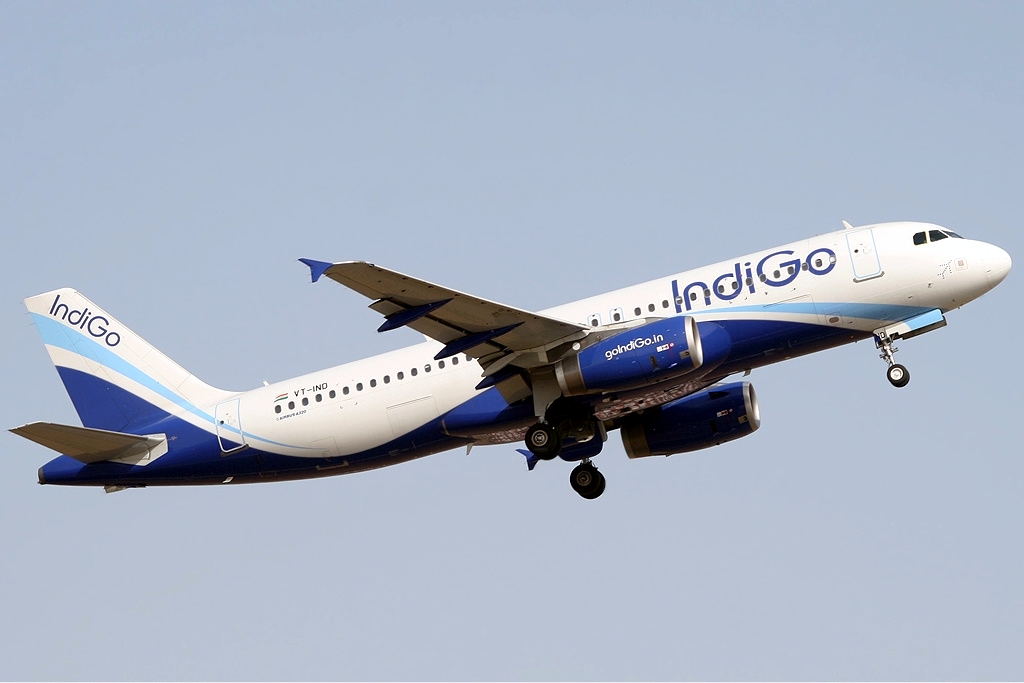
Quick expansion, dilution of low-cost model could be behind rift between IndiGo promoters

On a wet February evening this year, IndiGo invited a few journalists for a first-of-its-kind meeting with its top management, where CEO Ronojoy Dutta made a presentation about the airline’s growth, its obsessive focus on costs and future strategy. The single biggest takeaway from this meeting was IndiGo’s soaring overseas ambitions and its simultaneous aggressive domestic expansion. Dutta reasserted that IndiGo will be adding a new aircraft every week to its existing fleet till ‘eternity,’ while terming the perception that growth has been too fast as ‘incorrect.’ Now, as a rift between the two promoters of IndiGo has come to light through numerous news reports, it is this aggressive expansion which seems to be the bone of contention between Rahul Bhatia and Rakesh Gangwal.
Bhatia holds about 38% stake in IndiGo while Gangwal holds about 37% while the remaining 25% is with the public.
Fight for control
A source pointed out that the difference between the promoters emerged about two years ago and has snowballed into a fight over who will get greater control and therefore more say in how the airline functions. This person said that one promoter wanted to stick to the copybook LCC (low cost carrier) model with single fleet type, low fares and every additional service costing more. The other favoured a slow evolution of the airline into an FSC (full service carrier) with all the bells and whistles. IndiGo has already deviated from the LCC path it charted out for itself since inception. It started as a single fleet (one type of aircraft) airline with an all-economy cabin offering point-to-point connectivity on domestic routes. But today, it is a multi-fleet operation, connecting smaller Indian cities and the large metros while also harbouring ambitions of long-haul international operations.
Dilution of model
The dilution of its LCC model began when IndiGo first declared its unsolicited interest in picking up a stake in Air India. That was also the first time Indigo investors heard of firm plans to venture into low-cost international operations in medium and long haul markets. It eventually did not participate in the AI disinvestment process but around the same time, it ordered ATR aircraft for domestic regional operations, becoming a twin fleet airline.
Subsequently, there was a significant management churn as IndiGo’s long-serving top managers quit one after the other last year and the airline began replacing them with experienced expats, preparing for international expansion. This added to the friction between the two promoters, the source said.
Why the turbulence at IndiGo has both, investors and fliers, worried is clear: the airline accounts for almost every second domestic passenger (47% market share in March as per DGCA). IndiGo carried more domestic passengers than Air India, SpiceJet and GoAir combined in March and any disruption in its functioning could jeopardize India’s booming air travel market which is already reeling under the impact of the demise of Jet Airways.
No denial
Dutta has promised employees that there would be no disruption in the airline’s operations even as the airline informed BSE it is no position to confirm the rift between promoters. IndiGo has not denied any news reports about the rift either.
Meanwhile, at the February media briefing, IndiGo officials had said that starting April, capacity will be increased by 25-30% – all the new incoming planes will be deployed primarily in creating new routes between smaller cities within the country and in augmenting international operations. IndiGo’s massive and continued expansion needs some context: Not only does it account for every second domestic flier, IndiGo has been one of the only consistently profitable airline for years in a market where losses are par for course. It connects more than 1,500 city pairs with either direct or one-stop service.
More flights
By March 2020, even as connections within India to its smaller towns and cities will be enhanced, so will overseas connectivity. And international operations will account for more than a fifth of the airline’s capacity by then from about 17-18% now. Almost half the new fleet that is expected to come in will be used to fly to new overseas destinations. So, for example, in its plan to fly to London with one stop in between, IndiGo was studying whether that stop would be at Baku or Tblisi. For flights to China, it was examining five destinations before eventually picking two. IndiGo also spoke of plans to start flights to Vietnam, Myanmar, Turkey, Saudi Arabia and CIS (Commonwealth of Independent States) countries this year while also adding frequencies to existing routes.
As of now, almost a fourth of IndiGo’s capacity is deployed on metro to metro flights (like Mumbai-Delhi or Chennai-Bangalore) while almost half is deployed on metro to tier I cities. Now, it wants to offer connections between tier I and tier II cities, getting Silchar, Pondicherry, Gaya etc on the aviation map.
With IndiGo accounting for a bulk of India’s domestic air traffic and Jet Airways already grounded, any significant shakeup at the former would have a significant impact on India’s domestic aviation market.


